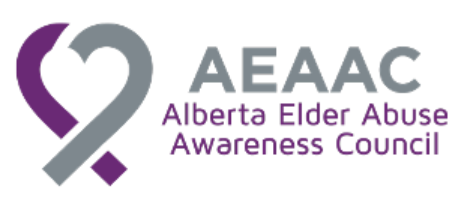- Details
- Published: 18 January 2016
By Erin Fleury and Heather Campbell
Surveillance in care homes is an unsettled area in law. This blog post looks at some recent legal developments in Canada and internationally.
The debate surrounding electronic monitoring in care homes involves many legal and ethical issues, especially when a family member is concerned about mistreatment of a loved one and wishes to place a camera or other device in the elder’s bedroom. Several important, though not necessarily competing, interests are triggered. Achieving a legally and ethically sound scenario requires a delicate balance of resident safety, autonomy and dignity, as well as the privacy rights of all affected.
Despite technological advances and increased awareness about elder abuse, the law on electronic monitoring in care homes is still trying to catch-up. This is the case in British Columbia, for instance, where there is a dearth of court decisions and no specific legislation on the topic. Privacy laws and the general language in the governing residential care statute provide guidance, but residents, families, staff and management are ultimately left navigating these difficult scenarios without clear direction.
Recent case law in Canada
One legal issue that has arisen in Canada is whether footage from a hidden camera installed in a resident’s bedroom can be admissible as evidence1. In 2010, the Quebec Superior Court upheld an arbitrator’s decision to allow video recordings into evidence. The case involved a worker who was fired for mistreating a resident. Concerned about bruising on her father’s arms and hands, the resident’s daughter hid a camera in his room. It captured the abuse. In finding that the recordings were admissible, the court emphasized that the daughter installed the camera without the care home’s knowledge. It was not a case of collusion between family and management.
In two recent cases, footage caught by hidden cameras installed by worried adult children has been essential to the criminal conviction of employees caught abusing residents. In R v Lamsen, a personal care worker plead guilty to assaulting a “frail, 87-year-old woman with Alzheimer’s disease.”2
Evidence of the abuse was captured by a camera installed by the victim’s daughter. In December 2014, Justice Chaffe of the Ontario Court of Justice sentenced the caregiver to five months in jail3. In rendering his decision, Justice Chaffe noted that the offender had “quite direct control over the quality and dignity of [the victim’s] life” and that she “betrayed this trust.”4 He further observed:
“[The victim’s] value as a human being was much diminished in Ms. Lamsen’s eyes. [The victim] had become a troublesome, frustrating task which she conducted roughly, quickly and with contempt. In her eyes, [the victim’s] hair required brushing, but also served as a handle for her to wrench about her frail body. [The victim’s] cries at her harsh treatment evoked no sympathy, only irritation. [The victim’s] feeble resistance to Ms. Lamsen’s assaultive behaviour attracted no shame, only further abuse. Of course, this assaultive conduct stopped immediately when others were present. This change in conduct betrayed her guilty mind. Ms. Lamsen was working with someone who could not fight back, whose complaints if voiced would not likely be believed. [The victim] had no power over her life and treatment anymore. It had been given to Ms. Lamsen and she abused this power. And, at least in the recordings of [the victim’s] treatment on June 10, 2013, she took pains to keep this abuse a secret.”5
Further, in R v Dumo, three caregivers in Calgary plead guilty to assaulting a 92-year-old resident who was “bed ridden, very physically frail and largely deaf.”6 Video recordings captured by the victim’s son were essential to the case. In October 2015, Judge Bascom of the Alberta Provincial Court sentenced the workers to 60 days in jail (to be served intermittently, so the offenders could fulfill their employment and family responsibilities).
Most recently, the Quebec Court of Appeal granted a fast track appeal in a case involving a camera placed in a room by a resident’s family members who had authorization from the care home.7 One issue in the case is whether the installation of the camera violates the employees’ rights under article 46 of the Quebec Charter of Human Rights and Freedoms, which states that “[e]very person who works has a right, in accordance with the law, to fair and reasonable conditions of employment which have proper regard for his health, safety and physical well-being.”8 In the 2014 arbitration decision underlying the appeal, the arbitrator ordered the care home to remove the camera.
Some U.S. states clarify the law and England provides guidance
As of 2004, no U.S. state laws expressly prohibited cameras in nursing homes, but “in all states except one, no law specifically prevent[ed] nursing homes from banning their use.”9 At the time, Texas was the only state with legislation authorizing nursing home residents or their legal representative to install cameras.10
Under the Texas law, residents or their legal representative wishing to use electronic monitoring in a shared bedroom must obtain permission from fellow roommates11. The roommates can make their consent conditional upon having the camera pointed away from them, and that audio recordings are limited or not used at all.12
Following Texas, at least four other states (New Mexico, Oklahoma, Washington and Illinois) now have legislation expressly allowing residents to install cameras.
The law in Illinois came into effect on January 1, 2016. Among other things, it states that any authorized video or audio recording may be admitted into evidence.13
Maryland has guidelines for nursing homes that voluntarily allow the use of electronic monitoring, if a resident or their legal representative requests it and the roommate consents. The difference here is that the nursing home can ultimately deny the resident’s request to install the electronic monitoring device.
In England, the Care Quality Commission tackled the controversial subject by publishing a leaflet in February 2015. The document stresses the importance of educating oneself before making the decision to install a surveillance camera to protect a loved one in care.
The road ahead
Where do we go from here? Residents, family members, staff and management may benefit from the emerging U.S. approach, which involves the creation of specific legislation to govern video surveillance in care homes. However, while clearer laws might help clarify some situations, the legal and ethical issues are likely to remain especially complex when it is family members who wish to install cameras, some of whom might then turn the footage over to the media. Far too often, we have watched the intimate moments of a vulnerable resident’s life broadcast on the news and shared across social media.
While decided under Quebec law, the fast track appeal underway in that province should shed some more light on electronic monitoring in care homes. The appeal was granted on December 7, 2015 and the parties have been given 60 days to file their statement. After receiving the care home’s document, the workers’ union must serve its statement no later than April 5, 2016. This will be an important case to follow in the coming months.
Authors:
 Erin Fleury is a second year law student at Thompson Rivers University, Faculty of Law. In the 2015 fall semester, she was in Heather Campbell’s Advanced Legal Research class, where she conducted research for a mock care home surveillance problem written by Kevin Smith of the B.C. Centre for Elder Advocacy & Support. Find her on twitter @fleury_erin
Erin Fleury is a second year law student at Thompson Rivers University, Faculty of Law. In the 2015 fall semester, she was in Heather Campbell’s Advanced Legal Research class, where she conducted research for a mock care home surveillance problem written by Kevin Smith of the B.C. Centre for Elder Advocacy & Support. Find her on twitter @fleury_erin
Heather Campbell is a B.C. elder law lawyer and master of laws student at the University of Saskatchewan. Find her on twitter @SeniorsLaw
1. Syndicat des travailleuses & travailleurs du CSSS du Sud de Lanaudière (CSN) c Lalande, 2010 QCCS 1239.
7. Vigi Santé ltée c Syndicat québécois des employées et employés de service, section locale 298 (FTQ), 2015 QCCA 2045.
9. Selket Nicole Cottle, “‘Big Brother” and Grandma: An Argument for Video Surveillance in Nursing Homes” (2004) 12:1 Elder Law Journal 119 at 121.
10. Christopher T Hurley, “Nursing Homes Ills: Better Background Checks, Monitoring Are Needed” (23 May 2002) Fulton County Daily Rep.” (2006) at 6, cited in Cottle, ibid at fn 11.
11. US, SB 177, Health and Safety Code, 77th Leg, Reg Sess, Tex, 2001 (enacted) § 242.846(b)(3).
13. US, HB 2462, Authorized Electronic Monitoring in Long-Term Care Facilities Act, 099-0430, Ill, 2016, § 50.

















